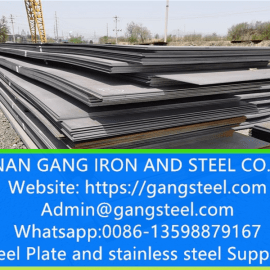What Are The Differences Between Stainless Steel And Cold Rolled Steel?
Content
What does cold rolling do to steel?
Carbon 1018 hot rolled steel is one of the most commonly available grades available in the world. Despite its unimpressive mechanical properties, this steel alloy is easily formed, machined, welded and fabricated. 1018 steel is suitable for parts which require cold forming (such as crimping, swaging, or bending).
Stock Thickness: 0.1-200.0mm
Production thickness: 0.5.0-200mm
Width: 600-3900mm
Length: 1000-12000mm
Grade:
200 series: 201,202
300 series: 301,304,304L,304H,309,309S,310S,316L,316Ti,321,321H,330
400 series: 409,409l,410,420J1,420J2,430,436,439,440A/B/C
Duplex: 329,2205,2507,904L,2304
Surface: No.1,1D,2D,2B,NO.4/4K/hairline,satin,6k,BA,mirror/8K
Brand��Chanson,TISCO,BAOSTEEL,POSCO,JISCO,LISCO
There are some basic variations between these two types of steel. The differences between scorching rolled steel and cold rolled steel pertains to the way in which these metals are processed on the mill, and never the product specification or grade. Hot rolled steel includes rolling the steel at high temperatures, the place cold rolled steel is processed further in cold reduction mills the place the material is cooled adopted by annealing and/or tempers rolling. First, it’s essential to know that chrome steel is an alloy and chilly rolled steel is a process. So, in the case of stainless-steel, the material is a metallic compound that’s composed of steel, along with other parts.
We have thousands tons stock of stainless steel sheet and coil with various size and grade,mainly include austenitic stainless steel, martens stainless steel (including precipitation hardened stainless steel sheet & coil), ferritic stainless steel, and duplex stainless steel.
Characteristics of Stainless Steel Sheet and Plate:
High corrosion resistance
High strength
High toughness and impact resistance
Temperature resistance
High workability, including machining, stamping, fabricating and welding
Smooth surface finish that can be easily clean
We produce ASTM/ASME Grade 304, Grade 304L,304h, 316, 316L, 316H, 316TI, 321, 321H, 309S, 309H, 310S, 310H, 410S, 2205, 904L, 2507, 254, gh3030, 625, 253MA, S30815, 317L, Type 317, 316lN, 8020, 800, 800H, C276, S32304 and others special requirement stainless steel grade.
- Customers often ask us in regards to the differences between hot rolled steel and cold rolled steel.
- Steels of different grades and specs can be either sizzling rolled or chilly rolled—together with both fundamental carbon steels and other alloy steels.
- It’s important to notice that the principle distinction between sizzling rolled and chilly rolled steel is certainly one of course of.
- “Cold rolling” refers to processes done at or close to room temperature.
- There are some basic variations between these two forms of metallic.
The minimum 10.5% chromium in stainless steels provides resistance to roughly seven-hundred °C (1,300 °F), whereas sixteen% chromium offers resistance up to approximately 1,200 °C (2,200 °F). Type 304, the most common grade of stainless-steel with 18% chromium, is proof against roughly 870 °C (1,600 °F). Other gases, corresponding to sulfur dioxide, hydrogen sulfide, carbon monoxide, chlorine, also attack chrome steel. Resistance to different gases relies on the kind of gas, the temperature, and the alloying content of the chrome steel. Unlike carbon steel, stainless steels don’t suffer uniform corrosion when uncovered to wet environments.
Oxidation resistance in stainless steels increases with additions of chromium, silicon, and aluminium. Small additions of cerium and yttrium enhance the adhesion of the oxide layer on the surface. The invention of stainless-steel followed a collection of scientific developments, beginning in 1798 when chromium was first proven to the French Academy by Louis Vauquelin.
The billet is heated after which sent for pre-processing, the place it’s flattened into a big roll. From there, it’s stored at a excessive temperature and run through a sequence of rollers to attain its completed dimensions. The white-sizzling strands of steel are pushed via the rollers at high speeds. For sheet metal, rolled steel is spun into coils and left to cool.
Unprotected carbon steel rusts readily when exposed to a mix of air and moisture. In addition, as iron oxide occupies a larger quantity than the original steel, this layer expands and tends to flake and fall away, exposing the underlying steel to additional assault. This passive movie prevents additional corrosion by blocking oxygen diffusion to the steel floor and thus prevents corrosion from spreading into the majority of the metallic. This movie is self-repairing, even when scratched or briefly disturbed by an upset situation within the surroundings that exceeds the inherent corrosion resistance of that grade. Resistance to corrosion and marking, low maintenance, and familiar luster make stainless-steel an ideal materials for a lot of functions the place each the energy of steel and corrosion resistance are required.
austenitic ss
Furthermore, if they’re brought into contact with a carbon steel or different type of steel that does rust, iron deposits could be made on the surface of these supplies that will oxidize and create rust. To course of scorching rolled steel, producers first start with a large, rectangular length of steel, referred to as a billet.
For different forms, corresponding to bars or plates, supplies are sectioned and packaged. Stainless steels have a long history of application involved with water as a result of their wonderful corrosion resistance. Applications embody a range of conditions together with plumbing, potable water and wastewater remedy, desalination, and brine treatment. Types 304 and 316 stainless steels are standard supplies of development in touch with water.

